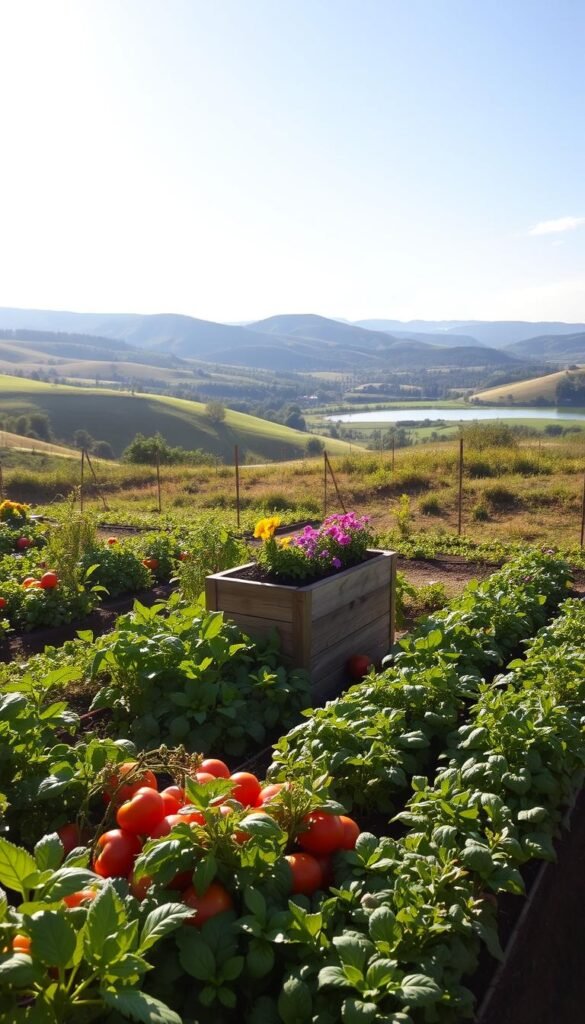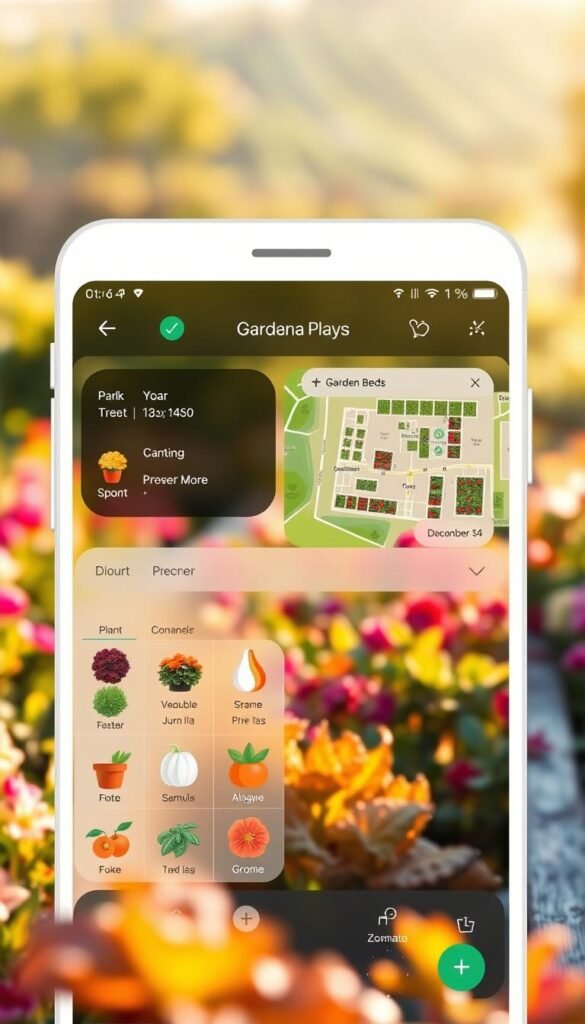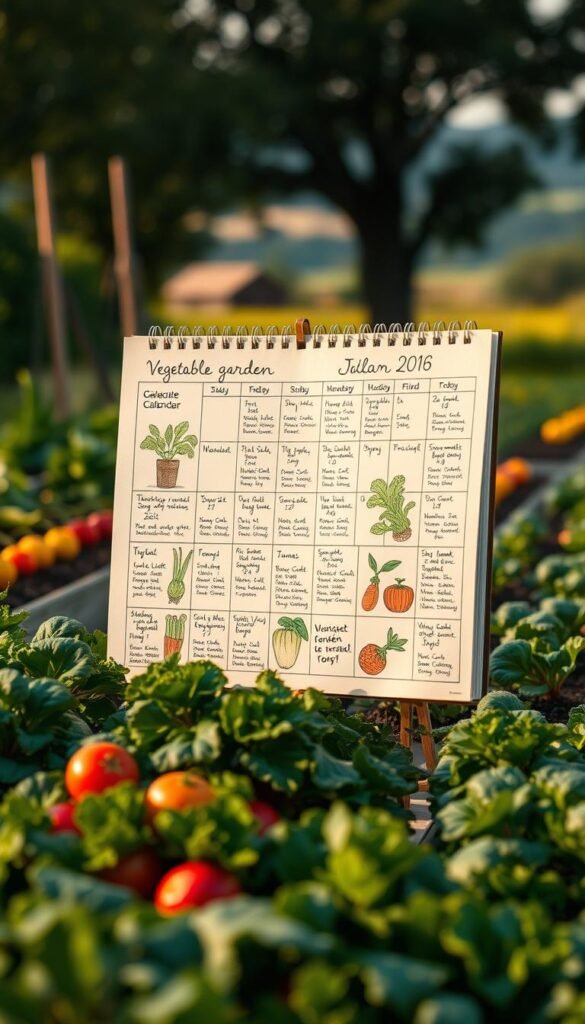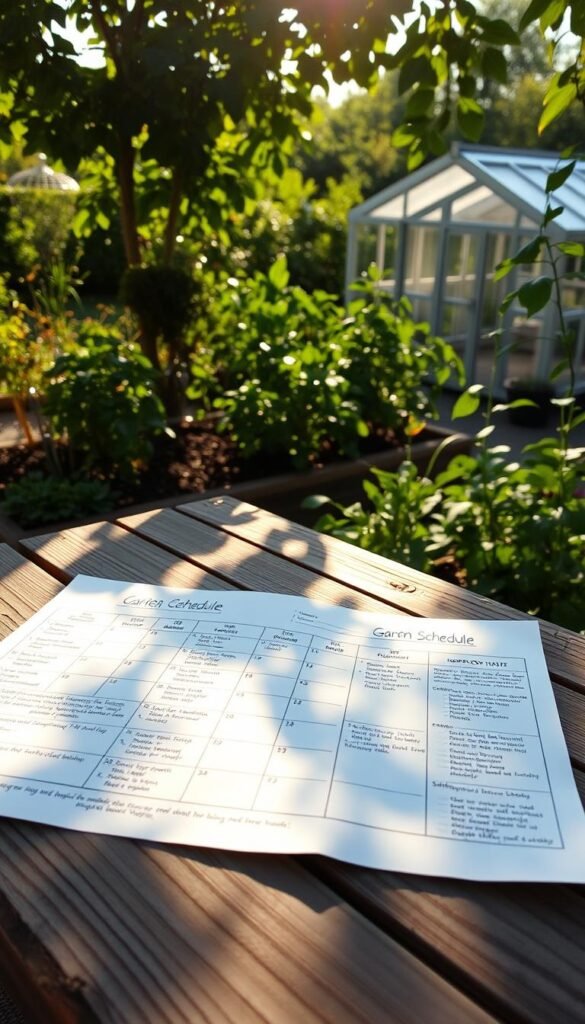Ever feel overwhelmed when it’s time to start planting? Modern digital solutions turn chaos into clarity by organizing every detail of your growing space. No more scribbled notes or misplaced reminders—these systems store your plans in one spot, accessible anytime.
Smart features do the heavy lifting, calculating ideal planting dates based on your zip code. They even suggest when to rotate crops or stagger plantings for continuous yields. You’ll know exactly which plants thrive together and how much space they need before you touch a trowel.
Visual layouts show your plot’s potential, helping you arrange greens and root veggies strategically. Track expenses and harvest values to see how much you save annually. Bonus? These platforms send reminders for watering, fertilizing, and pruning so nothing slips through the cracks.
Whether you’re growing herbs on a balcony or managing a backyard plot, these tools adapt to your microclimate. They help extend your season by suggesting cold-hardy varieties or shade-tolerant options. Imagine biting into homegrown tomatoes in November because your planner nailed the timing!
Introduction to Efficient Garden Planning

Staring at blank soil each spring? Transforming that space into a thriving oasis starts with smart preparation. A clear roadmap prevents wasted effort and maximizes every square foot of your growing area.
Why Structure Matters
Without organization, even experienced growers face overcrowded beds or missed planting windows. Centralized systems replace sticky notes with drag-and-drop layouts that show spacing needs and growth timelines. One user shared:
“The right system turns guesswork into strategy—I finally stopped drowning in seed packets.”
Choosing Your Foundation
Modern platforms solve old frustrations. Compare core features:
| Features | Traditional Methods | Modern Tools |
|---|---|---|
| Planting Dates | Manual calculations | Zip code automation |
| Space Planning | Paper sketches | Interactive grids |
| Task Reminders | Memory-based | Push notifications |
Look for tools offering mobile access and frost date adjustments. Prioritize platforms that let you track plant families to simplify crop rotation. As seasons change, your system becomes a living record—no more relearning lessons each year.
Exploring Top-Rated Garden Planner Apps and Tools

Imagine having a personal assistant that maps your growing season while suggesting ideal planting dates. Today’s top-rated apps transform complex scheduling into colorful, interactive experiences. Let’s explore how they simplify decision-making while adapting to your unique climate.
Visual Portfolio and Calendar Views
Drag-and-drop layouts let you experiment with plant placements before breaking ground. Seedtime displays your entire plot as a dynamic grid, automatically adjusting spacing needs as you add tomatoes or basil. Calendar overlays show seeding windows shaded in green and harvest periods in gold.
Multiple viewing modes help you strategize. Switch between monthly timelines for quick tasks and annual overviews to track crop rotations. One gardener remarked: “Seeing my entire season as color blocks finally helped me stagger plantings correctly.”
Effortless Task Management
Apps eliminate guesswork with automated checklists. After setting your location, you’ll receive daily reminders like “Transplant peppers today” or “Apply mulch to Zone B.” These alerts sync across devices, so you can check tasks on your phone while working outdoors.
Top platforms require no credit card to start designing. Try Seedtime’s free planner without time limits—it even suggests companion plants as you build beds. Paid versions unlock advanced features like expense tracking and yield predictions.
| App | Key Features | Access |
|---|---|---|
| Seedtime | 2,670+ plant database, zone-based alerts | Free start, no card required |
| Smart Gardener | Family-size meal planning | $10/quarter |
| GrowVeg | Curved bed designs | 7-day trial |
| Garden Manager | Sunlight analysis tools | Browser-based |
Whether sketching ornamental borders or food plots, these tools adapt to your ambitions. Export plans as PDFs for hands-on reference, or share digital copies with gardening partners. With instant updates and visual clarity, you’ll nurture plants—not confusion.
Vegetable Garden Planner Tools: Tracking Crops, Calendars, and Harvest Goals

What if your green space could whisper exactly when to sow carrots or pick peppers? Modern tracking systems turn seasonal guesswork into precise timelines. Drag-and-drop simplicity lets you map each seed’s journey from soil to table, with automatic adjustments for weather delays or busy weekends.
Popular apps like Seedtime calculate planting windows using your local frost dates. Just tap your zone, and watch your schedule populate with color-coded tasks. One user shared: “I finally stopped killing seedlings by starting them too early—the app’s reminders are lifesavers.”
Customization keeps you in control. Adjust maturity days for heirloom tomato varieties or space requirements for bush beans. If you’re three days late transplanting kale, the system reshuffles harvest estimates instantly. No more crossed-out notes or overlapping duties.
Weekly checklists arrive like clockwork, showing:
- Which seeds need indoor starts
- When to harden off seedlings
- Exact outdoor transplant dates
Compare multiple lettuce varieties side-by-side in your digital journal. Track which types bolted quickly or resisted pests best. Next year’s seed orders become strategic upgrades, not hopeful experiments.
Free versions let you test core features without payment details. Paid tiers unlock yield predictors and expense trackers—perfect for growers aiming to reduce grocery bills. Whether nurturing a patio container collection or half-acre plot, these tools help you work smarter, not harder.
Planning Your Garden Schedule and Succession Planting

Ever wish your garden could manage itself while you sip lemonade? Modern scheduling tools turn chaotic to-do lists into streamlined systems. They handle succession planting math and adapt to unexpected frosts—so you don’t have to.
Customizable Task Lists for Daily Success
Seedtime’s drag-and-drop lists transform overwhelming chores into bite-sized actions. Need to start broccoli seeds indoors next Thursday? The app adds it to your queue automatically. Filter tasks by type—like watering or pruning—or sort them by urgency.
One user raved: “I finally stopped forgetting to harden off seedlings—the daily alerts are game-changers.” Platforms like Smart Gardener even auto-schedule crop rotations based on your plot’s history.
| Tool | Task Management | Succession Features |
|---|---|---|
| Seedtime | Weekly checklists | Auto-spacing calculator |
| Garden Manager | Sunlight-based reminders | 3-season planting charts |
| Smart Gardener | Companion planting alerts | Harvest overlap warnings |
Calendar Sync for Seasonal Adjustments
Your phone’s calendar already tracks meetings—why not lettuce transplants? Sync tools like Garden Manager push updates when storms delay planting. Reschedule one task, and the system reshuffles later steps to keep your timeline intact.
These apps analyze local frost dates and soil temps to suggest optimal windows. Square foot gardeners love how they balance spacing needs with continuous yields. As one grower noted: “I harvested spinach six times last summer instead of just once—all thanks to auto-adjusted schedules.”
Whether juggling heirloom tomatoes or quick-growing radishes, these systems help you plant smarter. They’re like having a personal assistant who knows exactly when your cilantro needs company—or a break.
Mastering Garden Design and Crop Rotation
Transforming your layout isn’t just about looks—it’s about creating a self-sustaining ecosystem. Visual planning tools let you map plant families across seasons, ensuring leafy greens don’t deplete the same soil nutrients year after year. Color-coded grids highlight where legumes should follow brassicas to naturally fix nitrogen levels.
Smart systems analyze your previous layouts to suggest optimal rotations. They flag incompatible pairings, like placing tomatoes where peppers grew last season. One user noted: “It’s like teaching your plot to work smarter—my yields doubled without extra fertilizer.”
Adapt designs to your space’s sunlight patterns. Use vertical layers for climbing beans or trellised cucumbers, freeing ground space for root veggies. Platforms like GrowVeg even simulate shade patterns as plants mature, preventing overcrowding surprises.
With automated rotation schedules, you’ll maintain soil health while maximizing output. Your digital blueprint evolves with each harvest, turning trial-and-error into proven success. Now that’s how you grow a legacy—one strategic seed at a time.




